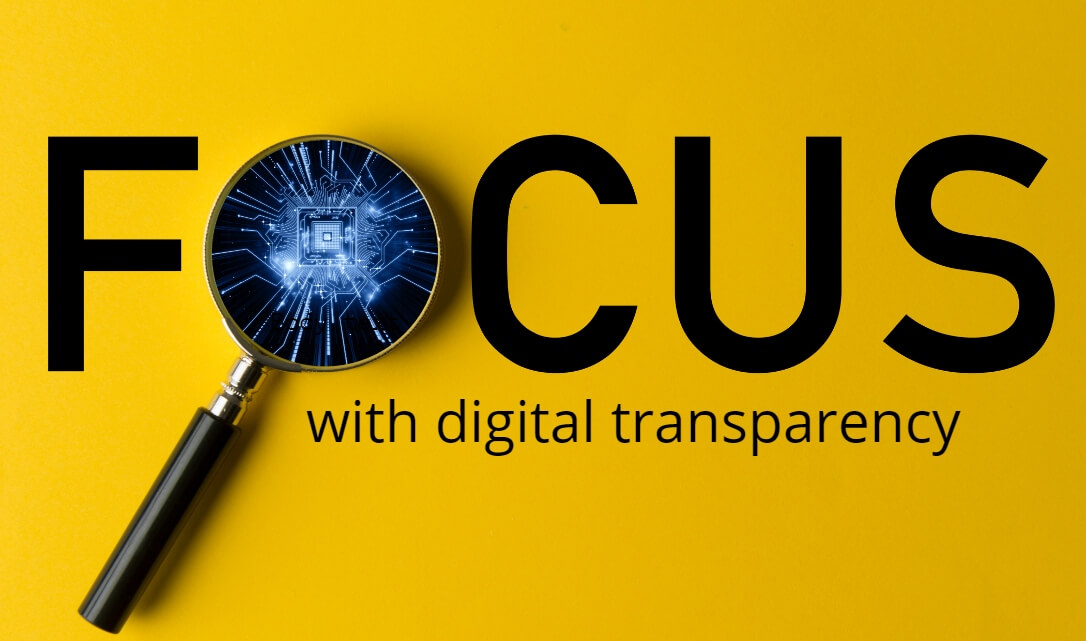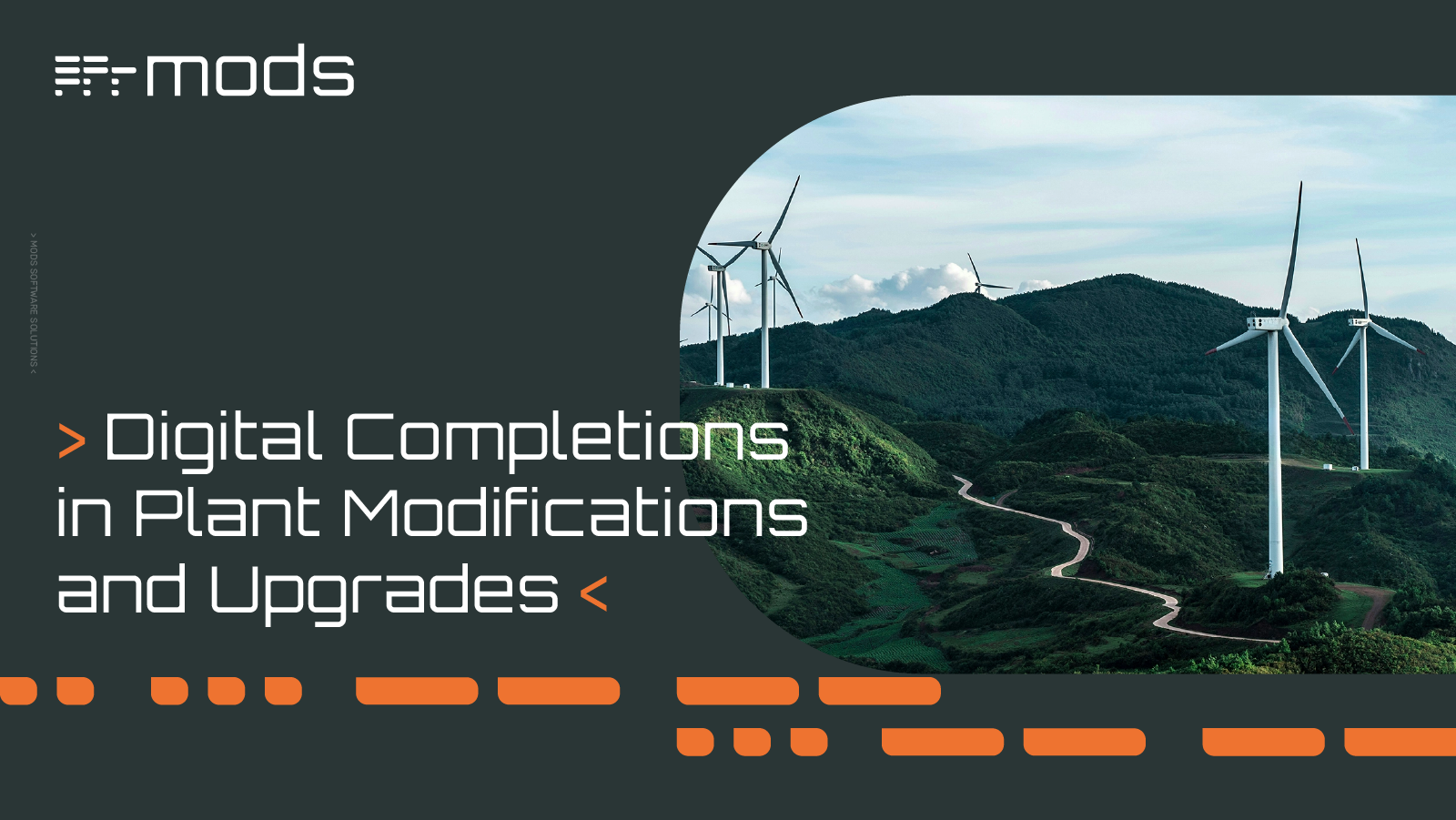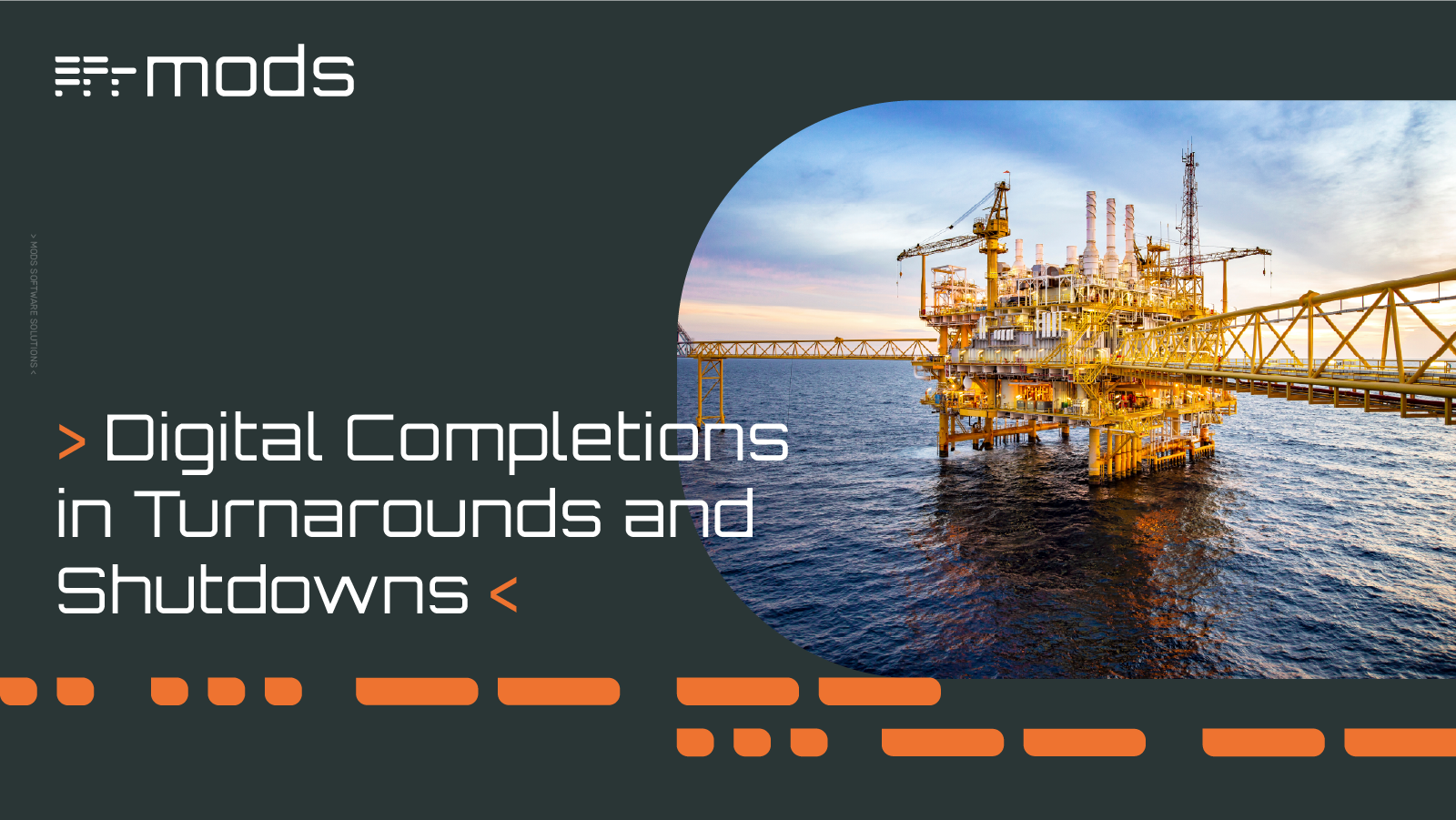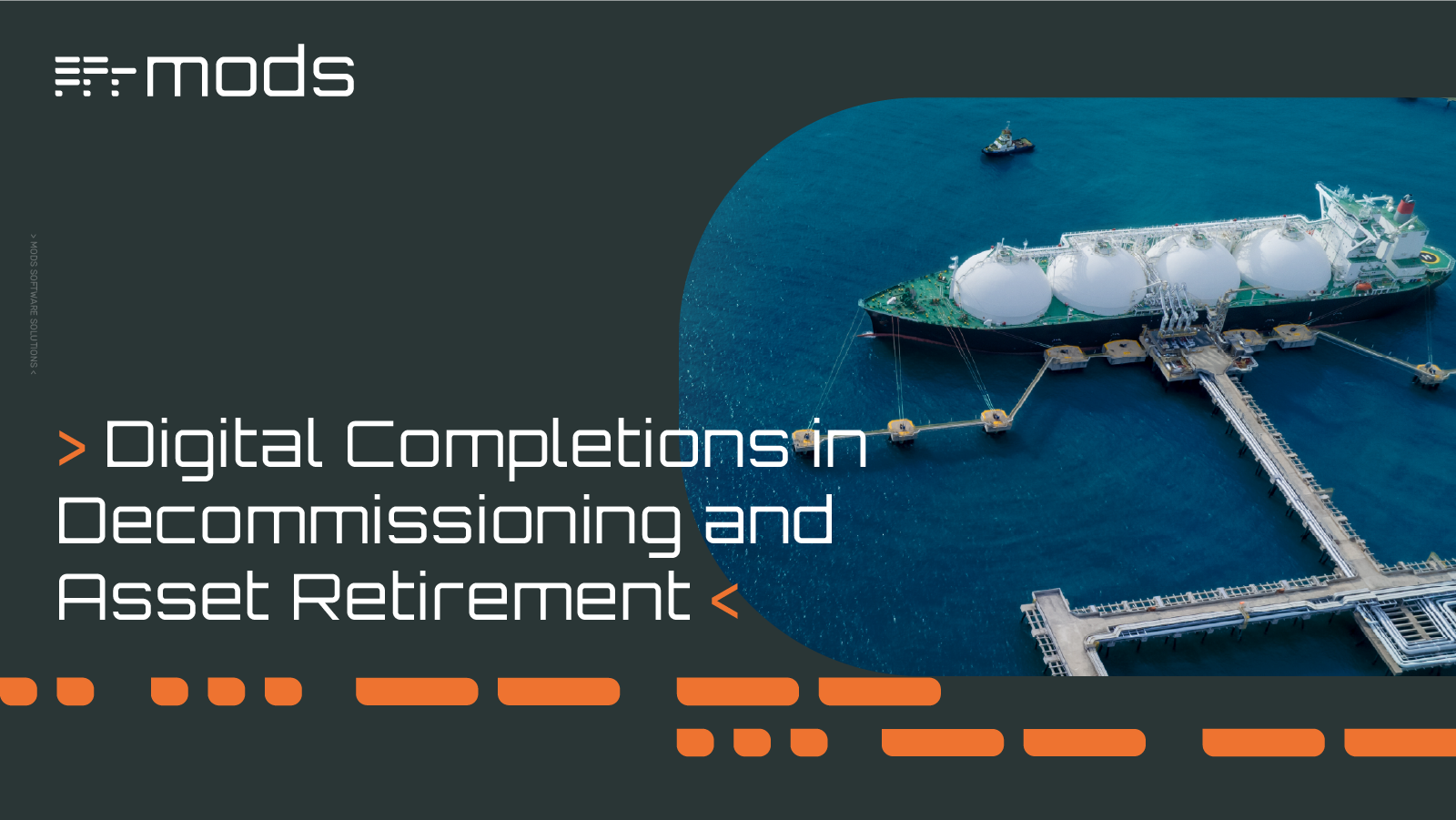Digital Completions in Plant Modifications and Upgrades
Unlike greenfield or any new build construction projects, plant modifications and upgrades present a unique set of challenges. Work is carried out...

Picture the scene. You are a Construction manager in the Energy Sector, and you desperately need more resources to complete your project. The first step you will most likely take, is to ask your superiors for more people to help. But the decision-makers quickly respond with: ‘You always say that, why should I give you more staff?’. If you are unable to demonstrate or prove your current situation, how can these decision-makers have the confidence to grant your request or appreciate the urgency?
What instantly negates this situation is ‘transparency’, a term frequently used in business today but rarely, truly appreciated. Transparency has the ability to transform business activities, revolutionize workflow and have a significant impact on efficiency. Digital technology facilitates transparency, with gathered data as the key factor for improving understanding and collaboration between teams, contractors, and stakeholders across numerous industries. It is this data-focused ‘lens’, at all levels of the business, that is vital to ensure appropriate, timely decisions are made based on accurate, up-to-date information.
Energy Sector Consultant, Edward Johnson is based in the USA, and has more than three decades of experience in the Oil and Gas industry across the globe. He is an advocate for digital software solutions that aid organizations in this area having experienced the positive impact technology can bring:
“It’s really important to have that transparency. If you have, let’s say, a digital twin of the facility; you’ve taken the original design, you've taken all the parameters of the instruments, the elevations, the view from the side, the plot plans, the view from the top and you’ve integrated all that together into a space. Then, when people need to decide about the availability of resources, you now have the tools to demonstrate your real progress, you can’t fake it, as it’s all there in the digital twin. You can see exactly how many yards of concrete poured, how many meters of pipe laid, and cable pulled, and so forth. There’s no lie, it’s all there clear to see, that if there is no release either of more funding, more people, or whatever the constrained resource is, then schedules will not be met. This digital twin proves that beyond a shadow of a doubt."
With the chances of doubt removed, transparency, this panoramic window on business activities, suddenly becomes incredibly powerful. A Construction manager would be inclined to enable that access to his sub-contractors or partners in doing the construction, so that they can see and identify issues in advance, ultimately giving them, collectively, the assistance to achieve their joint project goal.
The ultimate goal is to enable Senior managers to make quality, informed and timely decisions. To achieve that objective, you need to have input; data that is relevant and accurate from people who are on the ground in the workplace. This is where technology plays its biggest role. Software solutions with integrated mobile handhelds, QR codes and auto-population of forms and documents make data collection easier, more accurate and efficient, reducing the burden on individual workers. Accurate, timely and thorough, i.e., more data captured in software systems, tailored to present that data, means high quality and timely decisions.
Edward is keen to illustrate that different areas of the business have their own particular nuances:
“In the past, Engineering was more readily apparent, you get weekly reports, and you have a lot of people involved. That’s very familiar to most organizations. When you get to Fabrication, it's traditionally a very obscure, opaque part of the business because the fabricators live on a very thin margin with little access to advanced data collection, analysis, and reporting. Most fabricators have a good idea of their progress and pinch points, but don’t always have accurate data in terms of how far along they are in receipt of raw material, assembly, testing or paint and further, cannot easily convey that information to partners and customers. It is the same when it comes to construction, knowing where you are exactly versus your plan, is critical. How many cubic meters or feet of concrete have you poured, how far along are pipe supports and how many linear feet of pipe has been installed? Has all material arrived on site, complete and ready to install?"
Edward goes on to explain that a modern Project manager can sometimes be called a glorified Interface manager:
"What I mean by that is there are so many different parties. There'll be the, let's say, the asset owner or manager, the business, then there's engineering, design, and procurement. There's the fabrication, the transportation, the installation, the hookup, completions and commissioning and handover contractors and specialists. All of these different groups have to come together in any major capital project, whether it be a hydrocarbon or otherwise, to deliver the promise made months or years before. Should something go wrong, fingers are pointed very quickly to other organizations. ‘Hey, you were delayed in your engineering’. ‘No, you were delayed in approving our resources’. ‘No, you were delayed in providing the cost-time-resource estimates’. Who's to say what's the truth? Most of the time, it’s all the above.
When you have that transparency of data and progress, and you can see it in real-time, therefore no time or effort is wasted on that drama. You can quickly see this part of the design has not matured for whatever reason, but we can see it early enough that we can re-sequence our activities. We can maybe change the order of preference on procuring items, let's say, or we can change the precedence on actual fabrication in the yard. Bad news early is actually a good thing, because then you have time to fix it.
Project teams often work on the issues delaying schedules or increasing costs with hopes to reduce both only to fail and surprise management and other stakeholders. Transparency reduces that effect so that informed decisions may be made in time".
Without this ability to demonstrate current issues, workers and their managers will invariably experience anxiety. What happens next is the very familiar ‘firefighting’ as Edward explains:
“It can be very stressful when you're getting called at night or on the weekends, whether it be the clients, ‘Hey, why are you behind schedule?’ or your sub-contractors saying: ‘I'm going to have to charge you more because I couldn't gain access to the workface’. Or people on your team saying, ‘I've had it with this project because I keep hurrying up to just stand around and wait’. All these things create a tremendous amount of stress, so being able to anticipate and avoid that is priceless”.
Another positive of transparency is that it ‘always has your back’. For example, should critical-path items be delayed, blame cannot be assigned to poor construction performance, transparency tools offer visual proof of the problem and the reason behind the re-sequence.
It is true that a clear and accurate view is vital across the whole organization as, amongst the numerous benefits, it will highlight any departments underperforming but conversely may cause initial resentment amongst those who fear the ‘boss is watching me’ scenario. Edward is in agreement:
“Yes. It's frightening because people will think that they are being micromanaged or spied upon. One simple example I had of this, many years ago, was when I was leading a delivery area within a larger project and I asked that everyone put a camera on their desktop to improve collaboration and understanding. We were all working in different locations and I thought it better that if we had meetings or engagements, we just did it through our cameras rather than everyone dropping what they're doing and driving to a central location to have a meeting.
People were very uncomfortable as they perceived it as ‘you're watching me’ or ‘you're evaluating me remotely, and I don't like that’. In fact, offshore, they would hang their hard hats over the cameras to make sure that nobody could see them. They did not trust it so I had to demonstrate how it would actually make their job more efficient and enjoyable, by connecting with people visually and ultimately promote teamwork and joint focus on the various projects. So much more is gained from visual cues rather than just audio.
For many managers today, the struggle is still very real, it’s a huge challenge to get people to embrace technology, simple or complex, and use it in a way where they don't feel threatened, feel like they're going to lose their job, or made to look stupid or uninformed. They will more likely get enjoyment out of it, because they're going to experience more collaboration and deliver a better product at the end”.
It is clear to all that managers must encourage their staff to embrace transparency in a positive way. It allows all involved, whether they are the hands-on operative, stakeholder, contractor, or supplier, the ability to know and appreciate the reality of the project. Having to hand, the knowledge and proof to back up decisions, such as granting project teams more resources or more money, for organization decision-makers is priceless. Transparency builds trust and shared understanding...shared agreement on where they are, where they are going and what stands in the way of getting there.
Digital software solutions facilitate Transparency, the invaluable tool that helps companies who were previously blindly doing business, a chance to see a much clearer view of their work in progress and their future beyond.
Our Connect Software is helping many companies in the Energy industry achieve transparency.  for a custom solution.
for a custom solution.

Unlike greenfield or any new build construction projects, plant modifications and upgrades present a unique set of challenges. Work is carried out...

Turnarounds and shutdowns are among the most critical—and stressful—phases in the management and operation of industrial assets. These planned...

Offshore decommissioning and asset retirement present significant logistical, regulatory, safety, fiscal and reputational challenges. The process of...

It is all about the input - yes, it is as simple as that. Without sufficient and appropriate data, no matter what plans you have regarding the...
How materials are managed in a project plays a crucial role in the project's cost, integrity, and productivity. Material-related processes, such as...

The Global Pandemic has brought with it, death, devastating life changes and a myriad of workplace changes. The Energy industry did not escape the...